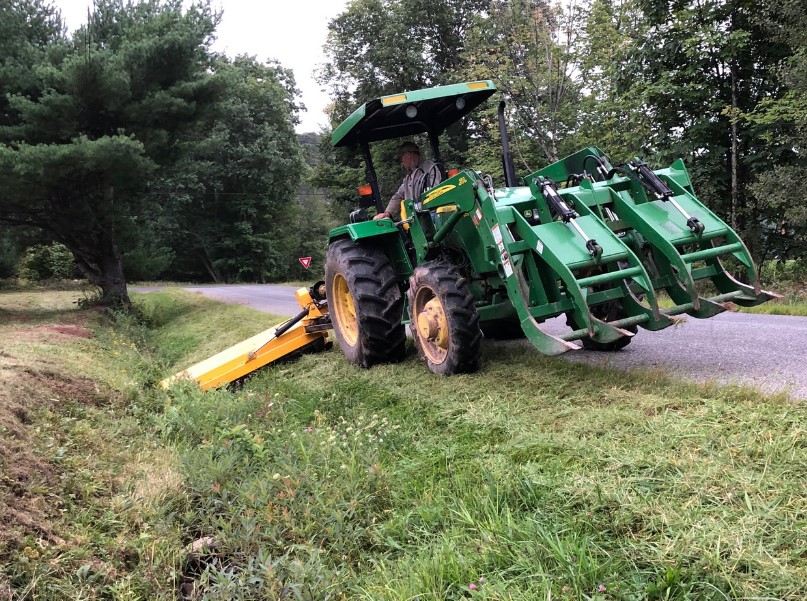
There are different types of vegetation control check on vegetation control Houston TX to see more details. Chemical methods involve applying herbicides to control weeds. Herbicides are used to destroy the weed’s standard growth patterns. They can also cause the plant to drop its leaves. However, you must select the proper herbicide for the purpose. In the wrong hands, the herbicide will ruin your desired plant. Here are some things to consider before using a chemical weed killer.
Unwanted plants
While removing vegetation is not always a practical solution, it can dramatically improve your outdoor space’s look. Unwanted plants can grow anywhere, including public buildings, pathways, and car parks. Overgrown vegetation can also pose a health risk and obscure valuable outdoor features like road signs. Additionally, untidy foliage can cover up street signs and camera locations, compromising the safety of your premises.
Common weeds include water hyacinth, purple loosestrife, clubroot of cabbage, and spotted knapweed. Some plants also host insects and diseases such as curly top viruses and spotted knapweed. Other invasive species that can be difficult to eliminate include tree-of-heaven and autumn olive. Fortunately, there are several techniques available to control these unwanted plants.
Weeds
The ecological understanding of weeds is a crucial foundation for a successful weed management program. While a one-acre market garden may not require a huge budget, a weedy vegetable field can spell disaster for a crop. The foundation of an organic weed management program is the ecological understanding of weeds. It can mean the difference between crop success and failure. Read on to discover the best practices for weed control.
Weeds play a vital role in the ecosystem. Some weeds serve as a food source, protect exposed soil, host beneficial organisms, and provide animal habitats. Many weeds also function as natural pest controls. In addition, some weeds even make nutritious food. Common lambsquarters, for example, are a source of highly healthy greens and protect the soil surface from crusting.
Weeds on non-crop sites
The spread of invasive species is a severe problem. Invasive plants can take over land, altering ecosystems and reducing access to recreational areas and farmland. Some weeds are even considered harmful. Some are so invasive that they are classified as invasive exotic species. Regardless of their origin, these plants pose serious problems.
Invasive weeds have a profound impact on the land. Their growth can change the landscape of the United States. To effectively fight weeds, we must take action early. Therefore, monitoring invasive species’ effects and implementing a coordinated weed control plan is crucial. Here are some useful weed control methods for non-crop sites.
Chemical weed control
Chemical weed control refers to any technique that controls weeds by application of an herbicide. Various herbicides are used for this purpose. These chemicals are formulated to inhibit the germination and growth of weeds. Herbicides have long been used for weed control, but the modern varieties of weed killers are more selective and less harmful to the environment when applied correctly.
The earliest herbicides used to control weeds were natural substances such as sea salt or industrial by-products such as oils. Later, scientists developed herbicides that had dual functions. These herbicides were less likely to be crop-selective but were still very effective. However, crop sensitivity is a complicated issue. Herbicides for vegetation control can be either very selective or very broad-spectrum, so be sure to check the label carefully.
Manual weed control
Hand weeding is a valuable tool in the horticultural industry, where a single person can remove many weeds in one day. While this method is usually limited to annual weeds, hand weeding can also affect some perennial species. Therefore, it is beneficial in small spaces, where the hand weeding action may not be as effective as using a machine. In addition, hand weeding takes more time than many other direct weed control methods, so only high-value crops use it.
Before you begin a weed control program, determine the specific type of weed you’re attempting to control. Different herbicides work better on certain plants than on others, and the best time to inspect your site is mid-winter or late fall. Spring is the most effective time for weeds that grow from seed, while mid-summer is the best time to check for annuals. Once you have identified the weeds, use a variety of herbicides to kill them and prevent their return.
Geospatial technology for vegetation management
Using geospatial technology for vegetation management helps utilities mitigate risks and improve grid reliability. Geospatial data can be used for a number of purposes, including assessing new construction sites and evaluating ongoing projects. These technologies also enable utilities to monitor construction trends and identify maintenance needs. In addition to managing vegetation, geospatial technologies can be used to predict weather risks, monitor land-use change, and even assess construction trends in different markets.
By using high-resolution satellites to monitor infrastructure, geospatial technology can be used for vegetation management. These satellites provide round-the-clock eyes in the sky. With this data, companies can make more informed and timely decisions. Furthermore, geospatial technologies can seamlessly integrate existing products and processing outputs. UP42 is an example of an integrated geospatial data management system.
